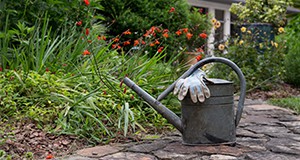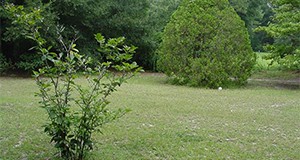
Not sure what to plant and when? Confused about how to care for your lawn differently during the winter or summer? Consult the Florida Gardening Calendar for your region (North, South, and Central). The calendars give instructions for planting ornamentals, fruits, and vegetables; lawn care and management; and irrigation and pest control for each month of the year. Split into sections about “What to Plant” and “What to Do,” these calendars are handy for any type of home garden. Written by Sydney Park Brown, and published by the Environmental Horticulture Department.
Central Florida Gardening Calendar: http://edis.ifas.ufl.edu/ep450
North Florida Gardening Calendar: http://edis.ifas.ufl.edu/ep451
South Florida Gardening Calendar: http://edis.ifas.ufl.edu/ep452
Tag: Lawn and Garden
Environmental Stresses and Your Florida Lawn

Florida lawns are subject to many environmental stresses. These can include nutrient deficiency, salinity, temperature extremes, over- or under-watering, soil problems, and prolonged exposure to shade or traffic. The use of proper cultural practices will help keep your lawn healthy and more stress-tolerant. This two-page fact sheet explains how to choose the most appropriate grass, fertilize properly, mow to the correct height, and irrigate for your lawn’s needs. Written by L.E. Trenholm, and published by the Environmental Horticulture Department.
http://edis.ifas.ufl.edu/ep070
South Florida Gardening Calendar (ENH1191/EP452)
 Prune non-spring flowering shrubs and trees in January to improve form. In March, plant warm-season vegetables, such as sweet corn, cucumber, watermelon, and pepper, for late spring harvest. If bahiagrass lawns are yellowing in May, iron may correct the problem. Butterfly lily and gladiolus are bulbs that can be planted during the middle of summer. Plant gladiolus every 2 weeks in September to stagger blooming. This 11-page fact sheet tells what to plant and what to do in your south Florida garden, year-round. Written by Sydney Park Brown and published by the UF Department of Environmental Horticulture, April 2012.
Prune non-spring flowering shrubs and trees in January to improve form. In March, plant warm-season vegetables, such as sweet corn, cucumber, watermelon, and pepper, for late spring harvest. If bahiagrass lawns are yellowing in May, iron may correct the problem. Butterfly lily and gladiolus are bulbs that can be planted during the middle of summer. Plant gladiolus every 2 weeks in September to stagger blooming. This 11-page fact sheet tells what to plant and what to do in your south Florida garden, year-round. Written by Sydney Park Brown and published by the UF Department of Environmental Horticulture, April 2012.
http://edis.ifas.ufl.edu/ep452
North Florida Gardening Calendar (ENH1190/EP451)
 Give cold-damaged palms proper care to encourage their recovery in February. In April, monitor landscape plants weekly for aphids on tender new growth. Annuals that can take full sun during hot summer months include celosia, portulaca, vinca, and some coleus. In September, plant cool-season vegetable crops, such as radish, carrot, cabbage, and lettuce. This 10-page fact sheet tells what to plant and what to do in your north Florida garden year-round. Written by Sydney Park Brown, and published by the UF Department of Environmental Horticulture, April 2012.
Give cold-damaged palms proper care to encourage their recovery in February. In April, monitor landscape plants weekly for aphids on tender new growth. Annuals that can take full sun during hot summer months include celosia, portulaca, vinca, and some coleus. In September, plant cool-season vegetable crops, such as radish, carrot, cabbage, and lettuce. This 10-page fact sheet tells what to plant and what to do in your north Florida garden year-round. Written by Sydney Park Brown, and published by the UF Department of Environmental Horticulture, April 2012.
http://edis.ifas.ufl.edu/ep451
Central Florida Gardening Calendar (ENH1189/EP450)
 Apply horticultural oils in January. Plant caladium bulbs in March. Watch for thrips, scale, and mites in May. Plant palms in June and July. Calibrate your sprinklers in September. This 10-page fact sheet tells what to plant and what to do in your central Florida garden in each month of the year. Written by Sydney Park Brown, and published by the UF Department of Environmental Horticulture, April 2012.
Apply horticultural oils in January. Plant caladium bulbs in March. Watch for thrips, scale, and mites in May. Plant palms in June and July. Calibrate your sprinklers in September. This 10-page fact sheet tells what to plant and what to do in your central Florida garden in each month of the year. Written by Sydney Park Brown, and published by the UF Department of Environmental Horticulture, April 2012.
http://edis.ifas.ufl.edu/ep450